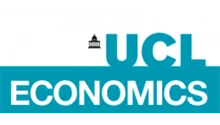Various adjustments to Britain’s tax and benefit system have created sharp spikes in marginal tax rates. Some families take home less than 40p of each extra pound they earn, blunting incentives to work or take promotions.
The top Income Tax rate in England – applied to those earning £125,140 or more per year – is currently 45%. But after other deductions and benefit withdrawals are made from people’s pay each month, the picture is quite different.
Many people earning less than this sum also face effective tax rates (i.e. the average rate a person’s income is taxed) of more than 60%, once all deductions are considered. This system creates illogical and painful outcomes. For some parents, for example, earning just £1 more can mean losing tens of thousands of pounds in support from the state. Something isn’t working.
Income Tax and National Insurance
On the surface, England’s Income Tax system has four different marginal tax rates depending on the amount of money you earn. These are:
- 0% on income up to £12,570 (Personal Allowance)
- 20% on income between £12,571 and £50,270 (the Basic Rate)
- 40% on income between £50,271 and £125,140 (the Higher Rate)
- 45% on income over £125,140 (the Additional Rate)
But these ‘headline rates’ do not represent the amount of money deducted from most people’s pay packets each month. In fact, for many people the share of each extra pound earned that is deducted is far higher than even the top tax rate for the highest earners.
The first thing to note is that ‘Income Tax’ is not the only tax that gets charged on workers’ earnings. National Insurance contributions (NICs) are also paid out of employees’ salaries, at a rate of 8% on earnings between £12,571 and £50,270 (or 6% for the self-employed), and 2% on earnings above £50,270.
In practice, NICs works just like another Income Tax, applied only to earned income (that is income from employment or profits from self-employment, but not company profits or investment income). So, even before any additional deductions the general rates of tax on incomes from work are actually: 0%, 28%, 42%, and 47%.
The Personal Allowance withdrawal adds 20 percentage points to rates around £100,000
In addition to the standard rates of Income Tax and NICs, a policy was introduced in 2010 that meant people earning over £100,000 a year would start to have their tax-free ‘Personal Allowance’ withdrawn. The Allowance is reduced by 50p for each extra pound earned over £100,000 until the Personal Allowance is fully removed. This isn’t an official separate band, but in effect it adds an additional 20 percentage points to the tax rate.
To explain, on top of the 40% Income Tax rate paid on their additional income, these taxpayers also have to pay 40% on the 50p ‘removed’ from their Personal Allowance. Add onto this the 2% National Insurance rate and people earning between £100,000 and £125,140 will face an effective marginal tax rate of 62%.
Student loans can further reduce take-home pay
The amount of money taxpayers can keep out of their income gets even lower across the board if you happen to be someone who has attended university and are paying back your student loans.
These repayments are not ‘taxes’ as such, but they still take a slice of each extra pound earned. The way the student loan system is designed means that repayments are still a chunk that is deducted from each additional pound earned. This will affect people’s work and career decisions in a similar way.
Most graduates pay back 9% of their income above £26,065 per year. If you also took out a postgraduate loan, you will be paying an extra 6% on your income over £21,000.
Added on top of the effective rates mentioned above, this means for someone with a master’s degree making just over £50,000 a year, they would be facing an effective marginal tax rate of 57%. Once their income crosses the £100,000 threshold, and their Personal Allowance begins to be withdrawn, the rate jumps even higher to 77%.
Figure 1: Effective marginal tax rates, 2025
Source: Author’s calculations, based on UK government data
Families are hit even harder by benefit withdrawals
For parents, the incentives can be especially harsh. Currently, children between nine months and four years old are eligible for 30 hours of free childcare per week. But as soon as either parent earns over £100,000, this entitlement is lost (entirely for children under three; for 3-4 year-olds it is reduced to 15 hours). On top of this, parents also lose access to the tax-free childcare scheme, which is worth up to £2,000 per child per year.
This is a huge cost and a strong incentive to remain below this £100,000 threshold. In fact, for a London family with two young children, crossing this line could mean having to pay an additional £20,000 for childcare out of their own pocket. To make up for this loss, a parent would need to earn at least £145,000 (before tax) before being better off again.
If the parent is also making undergraduate and postgraduate loan repayments, the amount they would need to earn is more than £160,000.
Figure 2: Take-home income for a parent of two young children in London, making undergraduate and postgraduate student loan repayments, 2025.
Source: Author’s calculations, based on UK government data. See Drayton & Farquharson (2023) figure 9 for an earlier demonstration with slightly different assumptions.
Note: The difference between the two lines is based on average cost of childcare for young children, assuming 50 hours of childcare per week. The difference between the two lines below £100,000 represents the 20 hours of childcare not covered by Free Childcare for Working Parents. Above £100,000 the gap represents the full 50 hours per week cost. The calculations use London median hourly childcare prices.
It is not just parents earning over £100,000 that face particularly high effective rates. Since 2013, parents that are accessing Child Benefit see the amount they can claim reduced as their income grows. This is done through something called the High Income Child Benefit Charge (HICBC).
Since 2024, 1% of the benefit is repayable for every £200 earned over £60,000, until it is entirely removed by £80,000. The exact effective tax rate this translates to depends on the number of children in a family and the maximum amount of Child Benefit that could be claimed.
To take an example, a two-child family in London can claim a maximum of about £2,250 in Child Benefit. This would mean each pound earned between £60,000 and £80,000 would lose them 11p in Child Benefits (or an additional 11% effective tax rate). Because the amount withdrawn depends on amount of child benefit a family can claim, it also means that parents with more children face a higher tax rate than those with fewer.
Add this on to all the rates discussed earlier and you find parents of two in this £60-80k income range face a spike in their effective marginal tax rate to between 53% and 68%, depending on the types of student loans they are (or are not) repaying, or even higher for larger families.
How do people respond to these high rates?
These spikes in the marginal tax rate mean you keep a much smaller share of the income you make as your earnings grow. This can strongly discourage people from trying to increase their income.
Taxpayers can respond to these parts of the tax system in variety of ways, which we could broadly define as ‘real’ and ‘reporting’ responses. Both these types of reactions matter for economic growth.
Real responses include situations where workers are actively changing the type or amount of work they are doing to avoid paying these high-tax rates. For example, someone making a little below £100,000 may not want to take a better-paying job or promotion that moves them into this high-rate region.
This is obviously an issue for the people not taking these jobs, as they are missing out on higher incomes that they would have been willing to accept if it were not for the tax they would face. But it also has impacts on co-workers, who may be less managed, and who subsequently have slower pay growth themselves.
More bluntly, some may choose to just work less. Professionals who can control their hours – doctors, lawyers or consultants, for example – may deliberately cap their workload for the year to remain underneath one of these thresholds. This could be a case turning down overtime or just deciding to work a four-day week. Again, this is bad for co-workers, who can’t access their skills at some times, as well as customers who have less access to these services.
If people are working less than they than would otherwise be choosing to, to avoid these tax rates, this is clearly an issue for productivity growth and the total amount of goods and services the economy produces.
This is particularly important for parents at risk of losing their free childcare subsidies. The British Medical Association (BMA) surveyed doctors in July 2024 and received “testimonials of how they have reduced their hours due to the childcare eligibility threshold, to ensure that they were not worse off, including those in key areas of focus for the government (cancer care; and psychiatry)”. Given that the government has made it its mission to reduce NHS waiting lists, this could be a significant inhibitor of achieving those aims.
Aside from these ‘real’ responses, people may carry on doing the same type of work they would have done anyway but change the way in which they manage their finances to make sure their ‘taxable income’ is kept outside of these regions.
One of the primary ways this can be done is by increasing the amount contributed to a pension. Pension contributions are exempt from tax and so someone with an income in one of these high-rate regions may decide to park this additional money in their pension and pay a lower rate on it when they withdraw it once they have retired.
On the face of it, this doesn’t seem to have any immediate effects on economic growth, since they are not currently deciding to adjust their work. But it still means that people are contributing more to their pensions than they would have wanted to if these marginal rate spikes did not exist, rather than spending that money now, when their children are young and they might have a greater need for it.
What’s more, if a large cohort of working-age adults are contributing very large amounts to their pensions, they may reach a point where they find they have saved up enough already and would consider taking an early retirement. This obviously would have an impact on growth with less people working and producing things relative to the total population.
Another way owners of businesses might avoid the higher rates is by keeping their profits within their company and only withdrawing an amount that keeps them below the tax rate spike. Like the pension contribution example, this can mean people delaying consumption until a later point in life than they would have preferred in a world where they did not face these marginal rate spikes.
How significant is this?
While not everyone adjusts their behaviour, there is evidence that these designs do matter. Analysis by the Centre of the Analysis of Taxation shows a clear spike in the number of taxpayers that reported an annual income of just under £100,000 in 2022-23. This suggests many taxpayers bunch up just below this point to intentionally avoid moving into the high-tax region.
Figure 3: Number of Taxpayers by Annual Income, 2022-23.
Source: Survey of Personal Incomes
The total effect of these high marginal tax spikes is uncertain, but one study by the Institute for Fiscal Studies (IFS) finds that the response by company owners is over twice as strong as that for employees (Adam et al, 2020). This study looks at incomes up until 2013-14, which is before the introduction of the £100,000 cliff-edge for receiving free childcare (which was introduced in 2017). It is plausible that this could have incentivised even more people to keep their earnings below £100,000.
The way forward
Britain’s complex tax and benefit system produces pockets of very high effective tax rates that don’t appear in the headline rates. It also creates sharp cliff edges, such as removal of free childcare, where some families are actually worse off after a pay rise, with an effective tax rate of well over 100%.
Whatever level of progressivity policymakers want in the tax system, these spikes and cliffs are arbitrary and difficult to justify. At present, the tax rates for people earning above £60,000 vary wildly depending on the number of children they have, and at £100,000 the tax rate is above 100% for parents.
Smoothing these spikes and cliffs would make the tax and benefit system simpler and more transparent. It could also support growth without reducing total tax revenue. For example, rather than a hard cutoff for free childcare at £100,000, the number of hours could be gradually reduced over a wider income range. This could be designed so that the very highest earners still receive no subsidy, but every additional pound still leaves parents better off. Such a reform would remove the strong incentive to keep incomes below key thresholds and reduce the growth-inhibiting behaviours described above.
Where can I find out more?
- How to fix income tax: Podcast by the Institute for Fiscal Studies
- Frictions and taxpayer responses: evidence from bunching at personal tax thresholds: Paper by Stuart Adam, James Browne, David Phillips and Barra Roantree
- The 2025 budget and beyond: How Rachel Reeves can approach tax reform to help drive growth: Report by The Institute for Government
- Thresholds in the tax system: Policy and administrative considerations: Report by the Tax Law Review Committee
Who are experts on this question?
- Arun Advani
- Helen Miller
- Stuart Adam









































